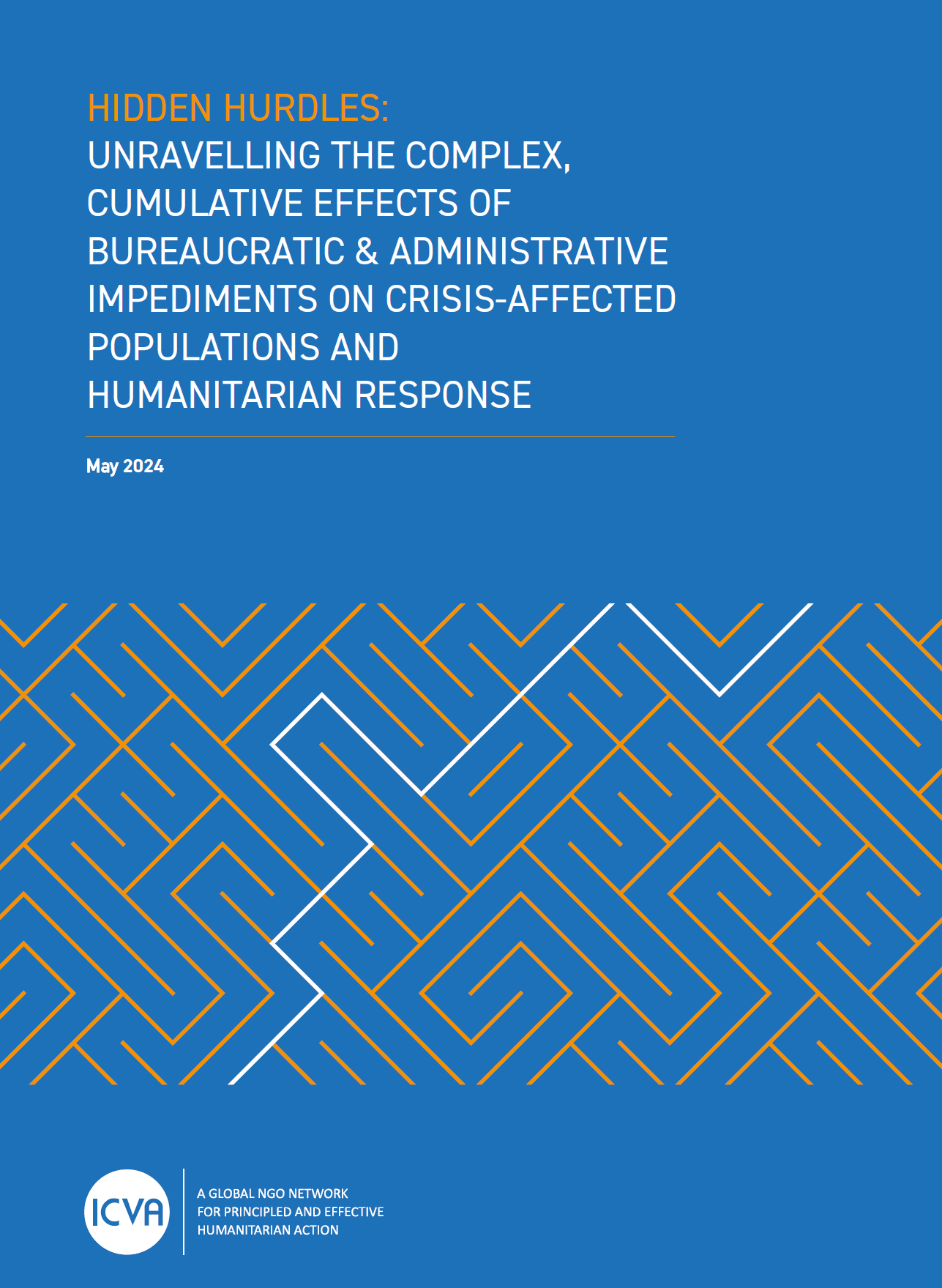Hidden Hurdles: Unravelling The Complex, Cumulative Effects of Bureaucratic & Administrative Impediments on Crisis-Affected Populations and Humanitarian Response

This report aims to enhance understanding of the importance and seriousness of various Bureaucratic and Administrative Impediments (BAI) areas and how BAI impacts crisis-affected communities, humanitarian responders, and humanitarian response. It delves into the complexities of understanding, connecting, and tracing the numerous sources and effects of BAI and how BAI intersect and mutually strengthen each other. It also investigates how BAI are dealt with in policy and practice across various contexts. Additionally, the report examines BAI reporting and monitoring mechanisms, including categorization schemes and potential indicators. However, the identified indicators need to be tailored to specific contexts. This is crucial for developing solutions that are suitable for the context, going beyond addressing a specific issue to tackling broader problems that cause bureaucratic obstacles.
The report builds upon the Inter-Agency Standing Committee’s (IASC) Framework for a System-wide Approach for Understanding and Addressing BAI, two previous studies on the topic, and two surveys conducted by the International Council of Voluntary Agencies (ICVA) to grasp the adoption of the IASC Framework. These insights are supported by semi-structured interviews with national and international humanitarian response actors in diverse settings.
Click on the below links to access the:
- Full Report
- Indicators for Monitoring Bureaucratic and Administrative Impediments and Measuring their Impact






